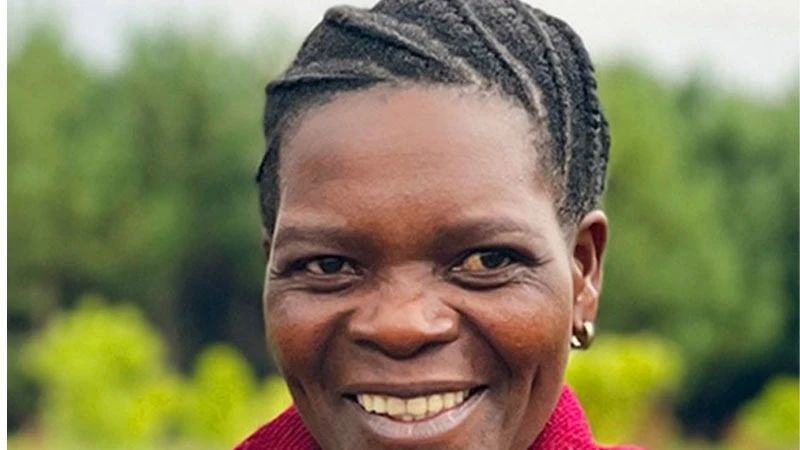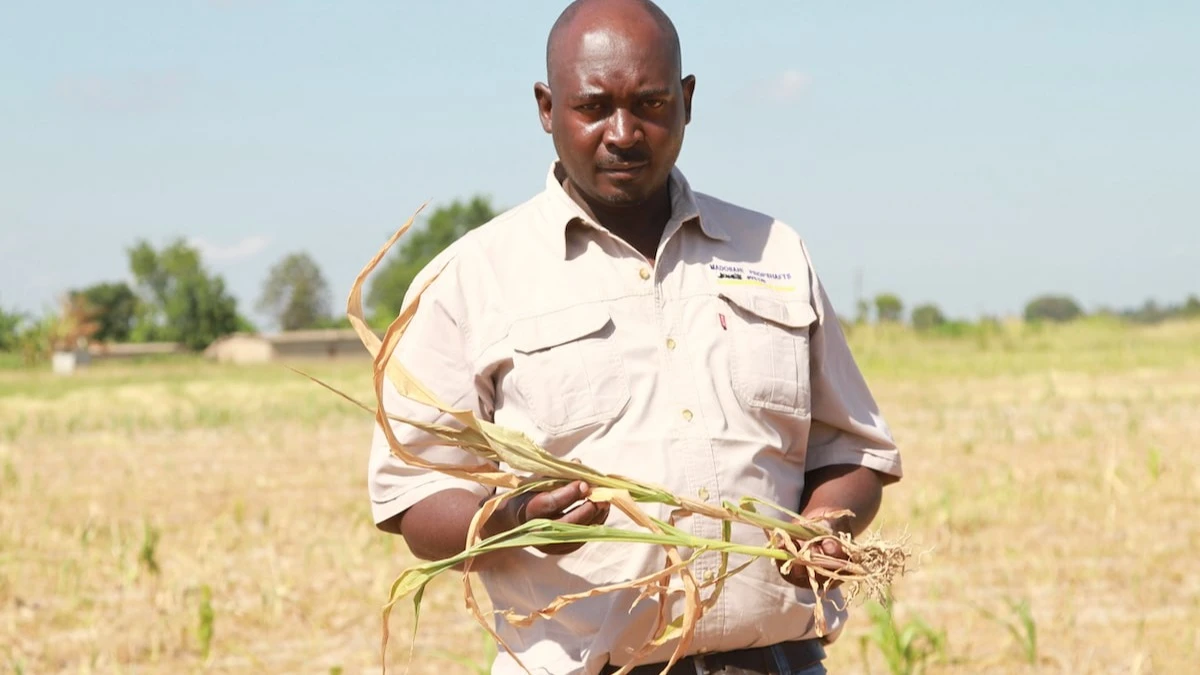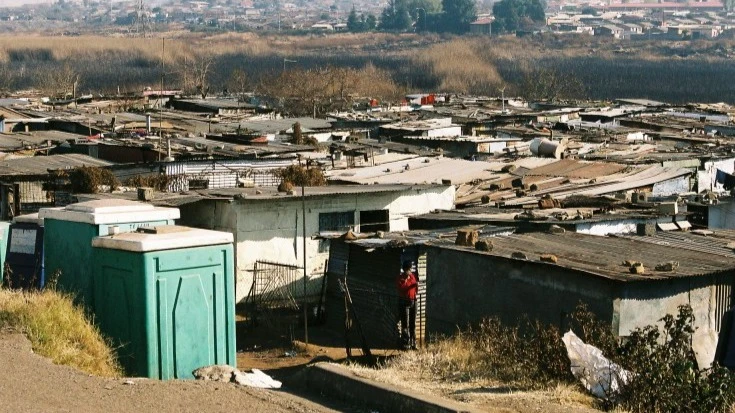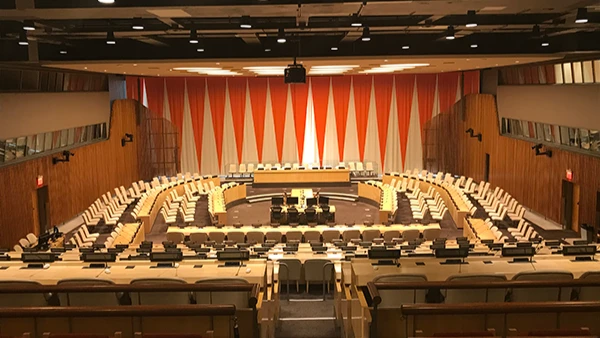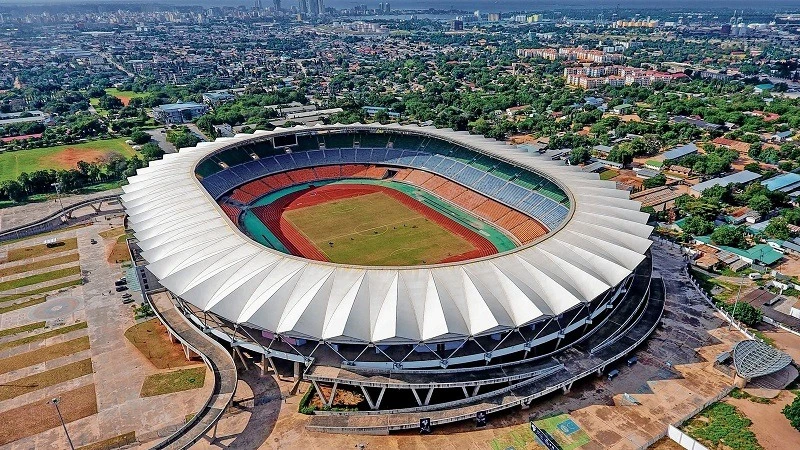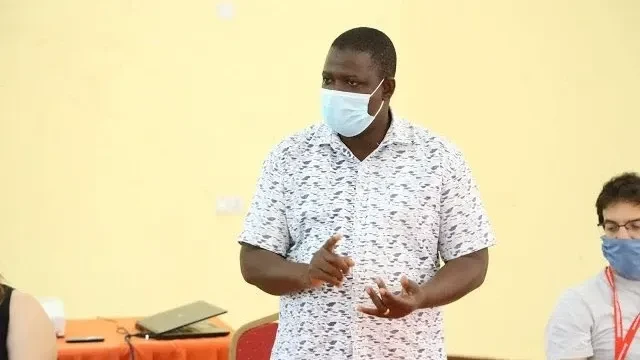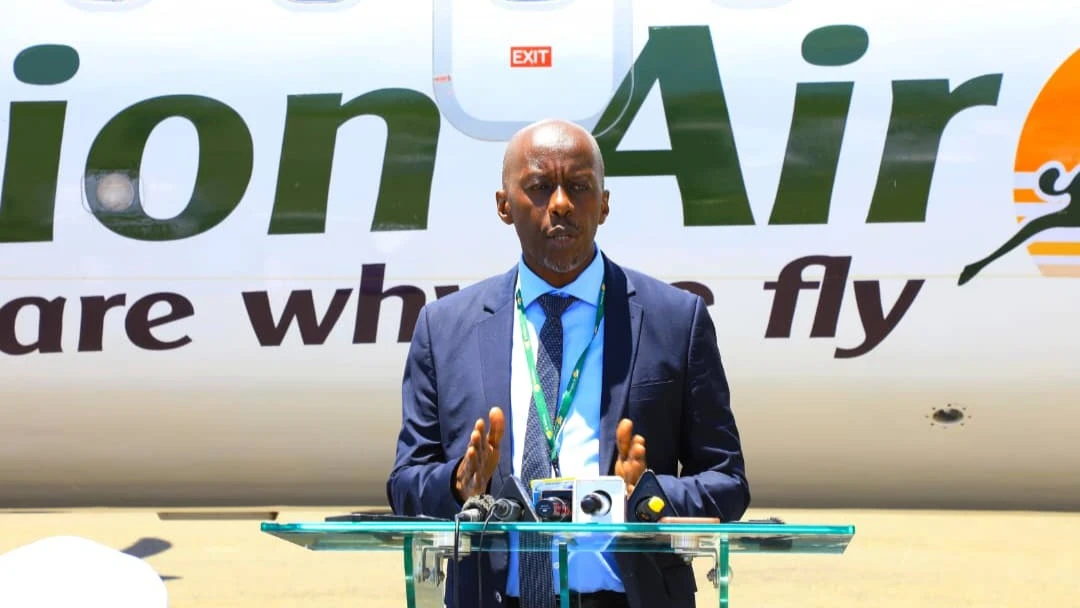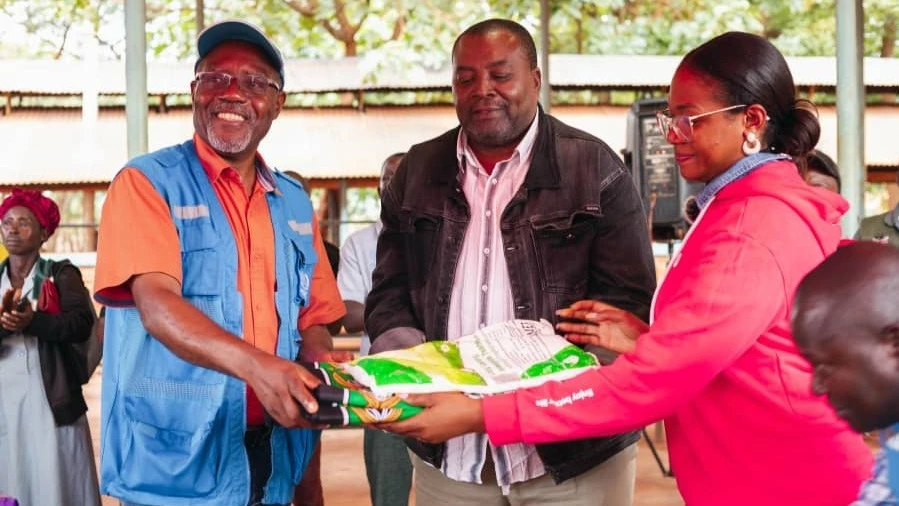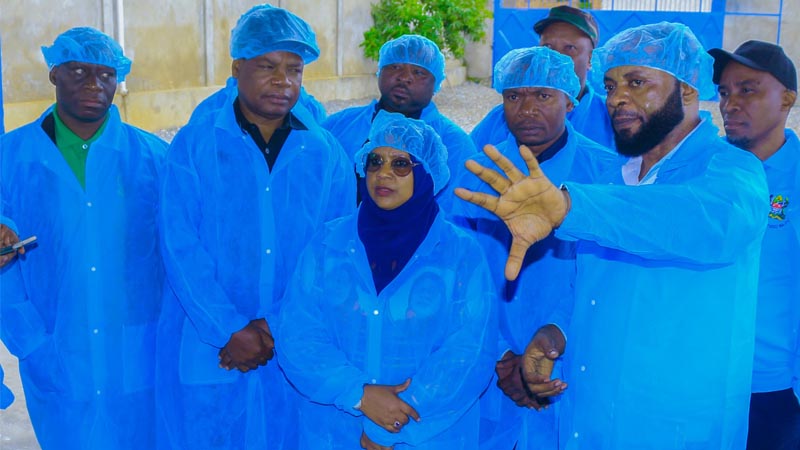Extreme climate conditions strain Africa’s livelihood and food systems
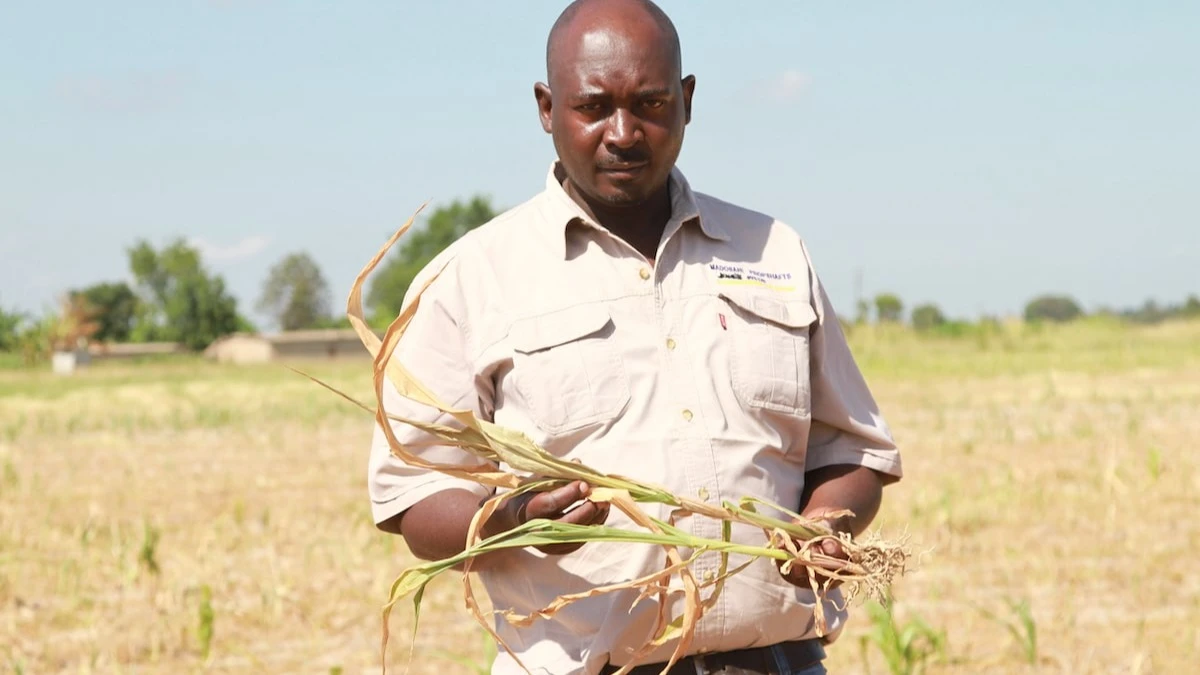
THE rising frequency and intensity of climate change related weather extremes are becoming costly for African economies, a recent report by the World Meteorological Organisation says.
According to The State of the Climate in Africa 2023 Report, for Africa, the year 2023 was among the top three warmest years in the 124-year record and the African continent has been warming at a slightly faster rate than the global average thereby disrupting sources of livelihoods and food systems.
“The warming has been most rapid in North Africa, around +0.4 °C per decade between 1991 and 2023, compared to +0.2 °C per decade between 1961 and 1990,” the Report says, adding that Southern Africa experienced the lowest warming trend compared to the other sub-regions. However the highest temperature anomalies in 2023 were recorded across northwestern Africa, especially in Morocco, coastal parts of Mauritania and northwest Algeria Morocco.
The Report notes that several countries including Mali, United Republic of Tanzania, and Uganda reported their warmest year on record. Extreme heat waves in July and August affected northern Africa.
The impacts of increasing temperatures and climate change in general have been devastating in the continent. In Egypt, for example, heat waves reduced the yield of wheat and caused water shortages, increasing the country’s dependence on grain and energy imports.
Between September and October 2023, floods affected around 300,000 people across West Africa while Zambia witnessed its most severe drought in 40 years, impacting nearly 6 million individuals. The drought cut down hydro-power generation, wiped out half of the country’s maize crop and prompted the government to slash its growth forecast down to 2.3 percent from 4.8 percent.
Experts say the trend of extreme weather events in Africa continues into 2024.
In the Sahel region more than 716,000 people have been affected by flooding this year, as reported by the United Nations.
According to Bloomberg L.P, in late August this year, authorities in Ghana said they planned to raise USD500 million to mitigate the impact of “drought-like conditions,” which are threatening to cause food shortages in the West African country while floods across East Africa in May claimed at least 400 lives, destroying cropland and washing away livestock.
Speaking at the ceremony to launch the report in Abidjan, Ivory Coast early this month, Hanan Morsy, Deputy Executive Secretary and Chief Economist at the Economic Commission for Africa (ECA) said that Africa is on the front lines of fighting climate change and its impacts, from rising temperatures to shifting rainfall patterns, and other extreme weather events. “Consequently, key sectors like the agricultural sector, which employs over 60 percent of Africa’s population, are under threat. Crops are failing and livestock are suffering as climate variability disrupts traditional farming practices, jeopardizes food supply, and the economic stability of nations, which are already grappling with high poverty and levels,” she said.
In Tanzania, extreme weather conditions have affected agriculture, infrastructure, construction, transport systems, and tourism, among other others. “These are the sectors that contribute most to the country’s GDP. We need to step up investment in these critical areas as a means of building adaptive capacity, and fostering resilience at the local, regional, and national levels,” says Masalu Luhula, Land Tenure Expert at Landesa in Tanzania. “There is a need to promote public awareness and gender inclusive decision-making in addressing climate change through different strategies related to adaptation, resilience, and mitigation,” he adds.
Other measures that should be taken to address impacts of climate change include investing in land tenure systems especially for small holder farmers who are likely to be more resilient and adaptive if their land tenure is secure. “But government must step up the political will to a just energy transition in order to reduce emissions and promote green growth,” says Luhula.
“Agriculture contributes about 24 percent of Tanzania’s GDP. Ironically it is one of the sectors hardest hit by impacts of climate change,” notes Tondole Gungulundi, Research Coordinator at Shahidi wa Maji and a climate expert who formerly worked with Climate Action Network (Tanzania). He explains that weather extremes such as erratic rainfall, above-normal rainfall and drought in some parts of the country are the main climate change stressors which affect rain-fed agriculture. Several measures have been taken by the government and other stakeholders in order to mitigate the impacts of climate-induced disasters and build resilience, “But the efforts do not match the frequency and intensity of disasters,” says Gungulundi.
He urges the government, NGOs, councils and other stakeholders to raise budgets for production and dissemination of climate information that would enhance early warning and preparedness. With adequate information and knowledge communities can take timely action that may reduce loss and damage.
“We also need to access more funding from international climate finance so as to enable us to implement more climate adaptation projects. Currently the country gets a very small amount of money from various international climate funds, a situation which makes it unable to cope with the increasing climate induced disasters,” explains Gungulundi.
The WMO report also sheds light on hazards of greatest concern for the African region which account for loss of GDP for individual countries. The figures were generated using the Nationally Determined Contributions (NDCs) of 53 countries in Africa based on the active NDCs submitted in June 2024. The hazards include foods which affect 48 countries, drought affects 40 countries, temperature increase affects 39 countries, changes in precipitation affects 38 countries and sea level rise affects 30 countries. Other hazards are storms which affect 26 countries, wildfire affects 18 countries, and landslides affect 14 countries. Dust storms affect three countries as well as pests and diseases which also affect three countries.
Talking about floods, the report shows that at least 4,700 confirmed deaths in Libya were attributed to flooding following the Mediterranean cyclone ‘Storm Daniel’ in September, with 8 000 still missing. Parts of Kenya, Somalia and Ethiopia experienced widespread and severe flooding, with more than 350 deaths and 2.4 million displaced people during the April-June rainy season.
“Record-breaking tropical Cyclone Freddy caused extensive flooding in Mozambique and Malawi, as extremely heavy rain fell. Malawi was especially hard hit with at least 679 deaths reported. A further 165 deaths were reported in Mozambique. Severe flooding with associated landslides affected central Africa in early May, killing at least 574 people,” the report notes. In September and October, approximately 300,000 people were affected by flooding across 10 countries, with Niger, Benin, Ghana and Nigeria most heavily impacted. During floods people could not easily access basic needs such as food, clean water, and healthcare and there was a near total collapse of local livelihoods in some places.
Drought has also impacted many African countries. Parts of Morocco, Algeria, Tunisia, Nigeria, Cameroon, Ethiopia, Madagascar, Angola, Zambia, Zimbabwe and Democratic Republic of Congo experienced severe drought in 2023. “Zambia faced its worst drought in the last 40 years, affecting eight out of ten provinces and approximately six million people,” the report says.
Regarding precipitation, the Report explains that regions with a marked rainfall deficit included the western part of North and Northwestern Africa, the Horn of Africa, portions of Southern Africa including Zambia, Zimbabwe, Botswana, and most of Namibia. In addition, Madagascar, central Sudan, northern Ethiopia and Uganda suffered from below-normal precipitation.
“West Africa experienced a normal to early onset of its monsoon rainy season. Precipitation was notably higher than normal in Angola and coastal areas north of the Gulf of Guinea,” the Report reads in part.
According to the report the rate of sea-level rise around Africa was close to or slightly higher than the global mean rate of 3.4 mm per year. The largest rate of sea level rise was observed in the Red Sea, reaching 4.1 mm per year.
Extreme climate-related events have telling impacts on agriculture and food security. In North Africa, for example, cereal production in 2023 was about 10 percent below the five year average estimated at 33 million tons in 2023, similar to the previous year’s already drought stricken harvest. Tunisia was the worst hit.
The report notes that erratic rainfall and the general situation of insecurity kept cereal production at below-average levels in Sudan, South Sudan, the Karamoja region in Uganda, Eritrea, Ethiopia, and central and western Kenya.
In Sudan, seasonal rains were below average and temporally erratic, with prolonged dry spells. The production of sorghum and millet was forecast to decrease by about 25 percent and 50 percent, respectively, compared to 2022.
The WMO thus calls for a fresh look at investment in adaptation and resilience, underscoring the fact that climate-resilient development in Africa requires investments in hydro-meteorological infrastructure and early warning systems to prepare for escalating high-impact hazardous events.
“Investments in National Meteorological and Hydrological Services (NMHSs) in Africa are needed to enhance data collection and improve forecasting capabilities in order to strengthen the ability of these institutions to issue early warnings and advisories for extreme events. There is a particular need to invest in cutting-edge technologies and systems to enhance the accuracy and lead time of weather, climate, and hydrological forecasts,” says the report.
The continent is already taking appropriate measures following the launch of Early Warnings for All Action Plan for Africa in September 2023. The primary objective is to make sure that timely and accurate information about natural hazards and impending disasters reaches all segments of African society, particularly the most vulnerable. A number of African countries have been identified for priority action in the global initiative.
Between 1970 and 2021, Africa accounted for 35 percent of weather, climate, and water-related fatalities. “Yet only 40 percent of the African population has access to early warning systems – the lowest rate of any region of the world. This new Early Warnings for All Action Plan for Africa seeks to change that,” the report says.
Top Headlines
© 2025 IPPMEDIA.COM. ALL RIGHTS RESERVED


